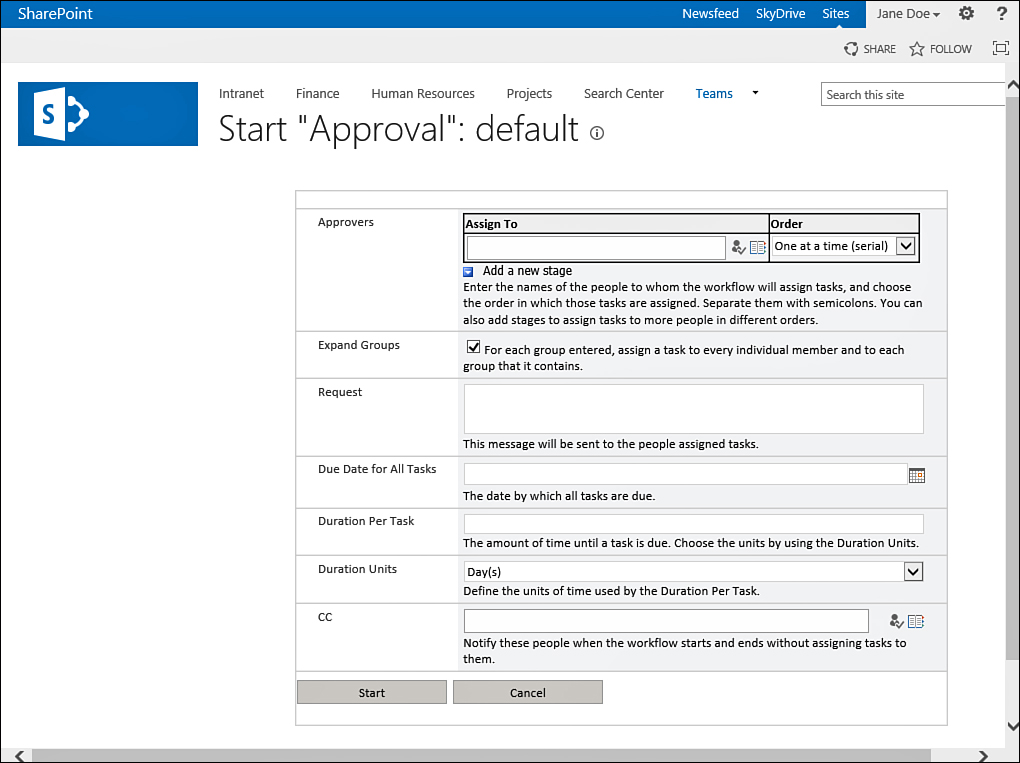What Are Versions?
Document libraries and lists in SharePoint
have an option to track versions. This option stores old versions of
files or items each time a change is made. For example, if a user
uploads a document, and then another user edits the document and saves
it, SharePoint saves the original document as a version of the file.
Later, users can look at the version history of the file and choose to
open a specific version or restore it (that is, make that version the
current one).
SharePoint supports two types of versioning.
In the first type, each change is regarded as a major change, and the
version numbers go from 1 (the first time a document was uploaded) to 2
(after the first change) and then 3 and 4 and so on as shown in Figure 1.
In the second type, each change is regarded as a minor change, unless
the user specifies that it is a major one. The version numbers go from
0.1 (the first time a document was uploaded) to 0.2 (the first change)
and so on, until a user selects the option to perform a major change,
and the version number changes to 1.0, and subsequent changes raise it
to 1.1, 1.2, and so on.

FIGURE 1 Viewing the lists of versions for a document.
What Does Check-in/Check-out Mean?
Check-in and check-out are
common terms in many document management systems, including SharePoint.
Their purpose is to prevent conflicts in an environment where multiple
people might want to edit the same piece of content (in SharePoint,
list items or files) at the same time. The term check-in
describes the process of adding a new or modified item or file to a
document library or a list to replace the previous version. The term check-out
describes the process of locking a version of a document or list item
in a list or library. By checking out an item or a file, a user can
prevent others from editing that content. By checking in the item, the
user can allow others to edit the content, without needing to worry
about overriding changes that others have made.
Usually when an item or a file is checked out
to a user, that user can work on that item or file, and other users
cannot. Other users have to wait for the user to check the item or file
back in (that is, perform a check-in) before they can edit the item or
file. While the item or file is checked out, other users usually can
see only the last version that was checked in; they can’t see the
changes that the current user has made on the file while it’s been
checked out.
Pages in SharePoint can be in document
libraries—and often are. This means that pages can be checked out and
in, allowing page editors to change a page (for example, add or remove
a web part), but the users cannot see the changes until that editor is
happy with the changes and checks the page in.
Note
SharePoint does not require a check-in and
check-out on all lists and libraries. This is a setting that the list
or library manager can set.
What Is a Workflow?
In SharePoint, a workflow is a series of
steps—some automatic, some manual—that need to be performed as part of
a business process for a document or a list item.
For example, the most common workflows for
documents are review and approval. Some important documents (for
example, contracts) need to go through several steps of approval from
different people before they can be officially considered final and
published. Figure 2 shows an example of starting an approval workflow.

FIGURE 2 Starting an approval workflow to publish a page.
Another example is pages in a site itself. In
some SharePoint environments, each change to a page needs to be
approved by the site’s manager to make sure the contents of the page
comply with the company’s policies.
SharePoint allows developers to develop
workflows and attach them to documents or list items. End users might
be expected to interact with a workflow, either approving documents or
items or triggering a workflow to start or stop.
What Are Catalogs?
In SharePoint 2013 you can make any
list or a library into a catalog. This makes the content of the list or
library available across the entire system to be displayed. This way,
you may have a list of products in one site (a product catalog), and
display the products’ information in other sites across the environment
using special web parts—without duplicating the content.